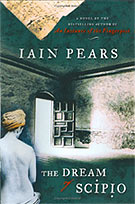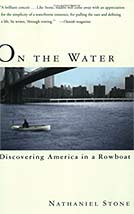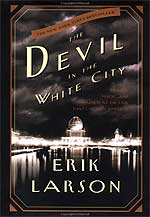Iain Pear’s The Dream of Scipio follows the lives of 3 men, all men who are deeply thoughtful and philosophical, all who must face terrible decisions which try their deepest beliefs, and all men who lived in France’s Provence in three different centuries of great upheaval. Manlius Hippomanus, a wealthy Roman aristocrat, suppresses his own Greek philosophical training to become a Bishop in the mid to late fifth century AD, the period during which the Roman empire is collapsing and Gaul is abandoned to the Visigoths. 900 years later Manlius’ writings are studied by Olivier de Noyen, a poet in the service of Cardinal Ceccani, during the brief historical period in which the pope resided in Avignon – the mid 1300s, and during which time the great plague decimated a third of Europe. 600 years later again, Julien Barveuve, a classics scholar unearths de Noyen’s writings in the Vatican. Like the men before him, Julien’s life is turned upside down as his world collapses during the Nazi invasion of France. Each man is also passionately in love with a powerful woman, and each passion leads to disastrous results.
Dedication to Jesus – St. Ignatius Loyola
Lord Jesus Christ, take away my freedom, my memory, my understanding, and my will. All that I have and cherish you have given me. I surrender it all to be guided by your will. Your love and your grace are wealth enough for me. Give me these, Lord Jesus, and I ask for nothing more.
Amen.
St. Ignatius Loyola (1491-1556)
Controlling Earwigs
First the spring rains brought the snails, which ultimately we were able to control with deadline. Then next came the earwigs, otherwise known as “pincer-bugs”. They were munching their way through our Swiss chard, flat-leaf parsley, and even the beet greens. They annually eat up our gardenias. The dilemma is that Earwigs are both beneficial and non-beneficial insects in the garden. They eat bugs as well as some garden vegetables. I’ve read they will help control scale on apple trees, but they are definitely not welcome around my chard and parsley!
On the Water – Nathaniel Stone
On the Water: Discovering America in a Row Boat – In the spring of 1999, Nat Stone set out in a row boat from near the Brooklyn Bridge in Manhattan to row his way around the Eastern half of the United States – up the Hudson through the Erie Canal, down the Alleggheny and then the Mississippi, around Florida, and back up to Brooklyn and up the coast of Maine. The trip was motivated by a lifelong love of the water and boats, and by the need to fulfill a dream of following the route of Howard Blackburn, a nineteenth-century Gloucester fisherman. (Blackburn had lost his fingers after the froze to his oars while he rowed for 5 days straight to come in from the sea in a storm. Blackburn subsequently taught himself how to sail and rigged a boat that took him up the Hudson, down the Mississippi, and around Florida.) Nat’s trip included one 9 mile stretch of portage, in which, hooked up to a harness, Nat pulled the boat over land. The trip was also broken up into two parts. The first part took Nat all the way down to the point that the Mississippi empties into the sea, begun in April 1999 and completed in August 1999. To complete the ocean journey Nat would need a boat that wouldn’t so easily capsize in ocean swells. He returned to the Bayou in January 2000 and picked up his journey again.
Fred Rogers – You Have to Make Choices
You rarely have time for everything you want in this life, so you have to make choices. And hopefully your choices can come from a deep sense of who you are.
Fred Rogers
The Devil in the White City – Erik Larson
Erik Larson’s The Devil in the White City is the true story of the building of the magnificent 1893 Columbian Exposition World’s Fair in Chicago and the sociopath murderer H.H. Holmes who preyed on young women coming to see the fair. In his telling, Larson transports us to the late 1800s from when Chicago first wins the right by Congressional vote to host the fair, beating out rival New York City, through the two years it took to build the White City, to the fair itself, which brought in an estimated 40 million visitors during the short time it was open. Daniel H. Burnham, chief architect of the fair, led the extraordinary effort to build the fair, a feat no one thought could be accomplished in the time given. The fair drew the best engineers, architects, and designers the country had and forever transformed the shoreline of Chicago. The result was such a resounding success, Bernham imprinted grandeur into the minds of visitors who came from all over the country and set the course of American neo-classical architecture for the next fifty years.
A few miles away, in the Chicago suburb Englewood, a more sinister story was unfolding. Dr. H.H. Holmes built a boarding house on a full city block, complete with torture chamber and crematorium in its basement. On the first floor of the building Holmes ran a pharmacy, complete with bogus cure-alls, a restaurant, and several seemingly respectable businesses – fronts for countless fraud schemes.


